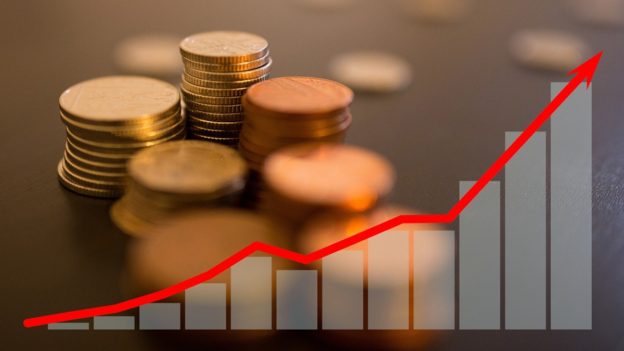India looks like a shining star amidst collapsing economies, uncertainties, geo-political concerns, high inflation, rate rising spree by major central banks
2020 was the year of pandemic and due to lockdowns the entire world was reeling under slowdown and recession. India too experienced a degrowth of 23% in the quarter ending June-20. The vaccinations against Covid-19 arrived and as the populations of various countries started getting vaccinated, recovery staged a comeback and helped boost the economies. Meanwhile most of the countries had given stimulus to their respective populations in the form of interest rate cuts, loans and assets purchases, personal cheques (in western economies) and regulation changes. A staggering amount of $ 9.3 trillion was spent by the entire world to provide stimulus. As recovery started towards the end of 2020 and beginning of 2021 the demand for all commodities increased as countries opened up their economies. Oil prices, commodity prices and food prices increased considerably as demand increased and there was a supply shortage.
The FED and other Central Banks expected that this increase in commodity prices was transitory and as supply increases due to opening of the economies the price increases will settle down. But they were proved wrong towards the end of 2021 as due to the stimulus given too much money chasing too few goods thus causing inflation not seen in the last 40 years. Most Western economies had seen inflation to the tune of less than 2% prior to the pandemic and started reeling under inflationary impact.
In Jan-2022 most Central Banks in the world started increasing interest rates in big numbers. Fed increased rates by 25, 50 bps once each and 75 bps twice. Canada increased it by 1% last. ECB and BOE have recently increased it by 50 bps. The Fed is expected to increase it by another 50 bps (Possibly 75 bps if the data of CPI is still higher) in September-2022. The Job growth in most of these countries has been very good with the latest number from the US indicating a Jobs growth of 528K. However, growth in Manufacturing and Services has been mediocre in 2022. As US FED tightens the US economy has technically fallen into recession as growth in the first two quarters has been negative and it is expected that it may remain in a mild recession towards the end of 2022 despite a decent jobs growth. The US Fed actually wants to have growth slow down to create some slack, so that supply side can catch up.
Also Read: Jefferies’ Chris Wood keeps India portfolio unchanged despite risk of Wall Street-led correction
The Russian-Ukraine war took oil to $ 139 per barrel levels before we saw a fall to $ 95 per barrel due to recession concerns. The prices of most commodities have fallen by 40-50% from its peak due to the same reason. The China-Taiwan situation has aggravated recently and a war on that front could cause serious implications on most economies as US and China will be directly confronting each other unlike in Russia-Ukraine. The UK and European economy are already in doldrums due to gas supply issues from Russia as the winter approaches. They are expected to be in recession by the end of the year as higher inflation and rate hikes take a toll on the economy. Global economic growth slowed to a crawl according to the latest PMI survey data, led by the developed world falling into a contraction for the first time in 2 years but price pressures eased.
India is in a bright spot amongst all these economies despite the high oil prices and the recession in the other parts of the world and economic collapses like Russia (due to sanctions), Sri Lanka, Pakistan (Very little Reserves) and very recently Bangladesh, has caused a trade deficit number which has been above $ 22 billion for the past 6 months leading to lower exports and higher imports. The trade deficit number for July -22 has surged to a record $ 31 billion and increased the chances of CAD going up to – 3-3.5% from a positive of 0.5% on June-21.
However, the domestic demand and good rains in the country till now will ensure that the growth for the current year is at 7.2%. FPIs have turned modest buyers in the stock market after selling $ 50 billion till June-2022. The Rupee has stabilized near to 80 levels amidst a strong dollar and a falling euro, pound, yen and most Asian Currencies. The fall in rupee has been mild at 7.5% while the dollar index has risen by about 11.5% (down from a high of 14.70%) during the year. The slowing exports and lower inflows due to rising interest rates in the US are the only concern for the rupee. Indian Rupee is still overvalued by about 4%.
Overall India looks like a shining star amidst collapsing economies, uncertainties, geo-political concerns, high inflation, rate rising spree by major central banks, supply chain disruptions, slowing growth, and recession concerns offsetting buoyancy in the recovery. India will remain the fastest growing major economy of the world with a stable growth, slower inflation and a domestic story. A recent Bloomberg survey said that there is a zero probability of India slipping into a recession but headwinds of slower exports growth, higher oil prices, pollution and environmental issues remain a concern.
https://www.financialexpress.com/market/india-to-remain-fastest-growing-economy-with-stable-growth-slower-inflation-interest-rates-hike-worry-for-re/2645280/





